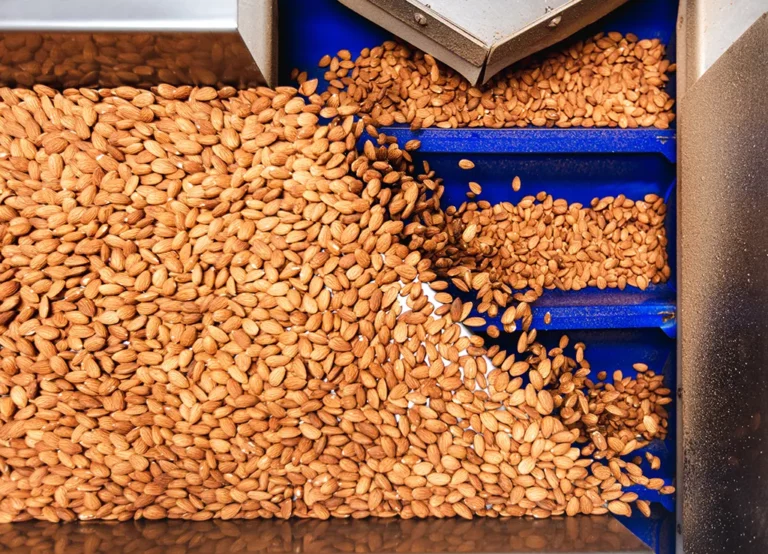Empty cart
Oh no! It appears your cart is empty. Add some almonds to your daily regime with the Treehouse products.
All Blog PostsAlmond Market UpdatesNews
California handlers shipped 175.4 million lbs in June, up 6.2% from shipments of 165.2 million lbs in June last year. The healthy number was boosted primarily by strong shipments to India (up 52%, 8.0 million lbs), while shipments to Turkey (up 86%, 2.2 million lbs) and Algeria (up 128%, 1.3 million lbs) also helped. Domestic shipments came in slightly higher (up 2.3%, 1.6 million lbs). Although down 44% year-on-year, June Chinese shipments of 5.6 million lbs are up compared to the past several months as Chinese buyers show emerging confidence. Encouragement can also be seen in the quick rebound in Western European shipments which showed weakness in May (38.8 million lbs), but recovered well in June (44.8 million lbs).
Strong shipments were somewhat anticipated, particularly to India as buyers and sellers unwind positions stalled by earlier lock-downs and sharply lower market levels. Better availability is also helping. Last year shipments were throttled by an end July carry-over at a bare bones 318.3 million lbs, while this season the carryover will swell to over 450 million lbs.
With only one month left in the 2019 season, season to date shipments now stand at 2,192 million lbs, up 3.9% compared last season.
Dampening some of the enthusiasm of shipping an additional 10.2 million lbs, handlers reported a surprising 10.9 million lbs of receipts in June, bumping total 2019 crop receipts to 2,547 million lbs. We have not seen a late receipt number like this before — with typical June receipts trickling in at a 1 to 2 million lb pace.
Commitments show strong new crop sales in June of 172 million lbs. New crop commitments at 458 million lbs are now about double what they were a year ago, reflecting good demand from both domestic and export buyers as they enjoy the lowest prices in a decade. As a percentage of the anticipated crop (we will use 3.00 billion lbs) the industry has sold about 15.6% of the crop versus 9.3% at the same a year ago.
Current crop commitments remain healthy at 370 million lbs, with June sales of 90 million lbs about typical.
The 2020 crop Objective Estimate was released earlier this week putting the upcoming crop at 3.00 billion lbs. This matches the 3.00 billion lbs Subjective Estimate released in May. Nutset in the north and central part of the state are sharply higher than last year, while the south is about the same. Average kernel weight (only down 2% at 1.51g) will come as a bit of relief to buyers who prefer counts on the larger end of things. Other influential prognosticators seem to agree that a big crop is on the trees; Terra Nova 2.96 billion, Wonderful 2.85 billion lbs. Bountiful (formerly Vinsight) is a notable outlier at 2.72 billion lbs. For now, the market will continue to contemplate 3.00 billion lbs, a sobering 450 million lbs more crop than last season.
The market took the Objective estimate in it’s stride. If anything, the bottom end of the market (standard 5% pricing) lifted a few cents post estimate. Standard 5 pricing which had been seen in the $1.70 to $1.75 range last week is now offered in the $1.80 to $1.85 range, while buyers would like to pay $1.75 per lb. Nonpareil premiums continue to languish. Expectations for a nonpareil crop 24% larger than last year are not helping.
Looking forward over the next couple of months we expect more of the same. The market will not have any further crop information until early harvest results emerge — likely in mid to late August. Meanwhile shipments should continue to perform decently. Demand, as confirmed by shipments and commitments in today’s report, is not the problem. Buyers are out there and enjoying the low prices, which appear to be working well. The market is grappling with the additional 450 million lbs of crop and whether prices are low enough to encourage additional shipments to the tune of 16% to 18% and California’s appetite for a heavy carry-over into the 2021 season. With the Objective Estimate now behind us, any sellers that might have delayed their 2020 campaign will likely get to work. We anticipate that prices will remain near current levels until either supply (crop) or demand (shipments and commitments) suggest a change of course.
Stay tuned for the release of significant almond industry information, such as almond crop estimates and acreage reports. You’ll also find Almond Board shipping reports and related analysis from the Treehouse Almonds Leadership Team.

Be in the loop for vital news about the California almond market.
Enjoy 10% off when you order 6 or more